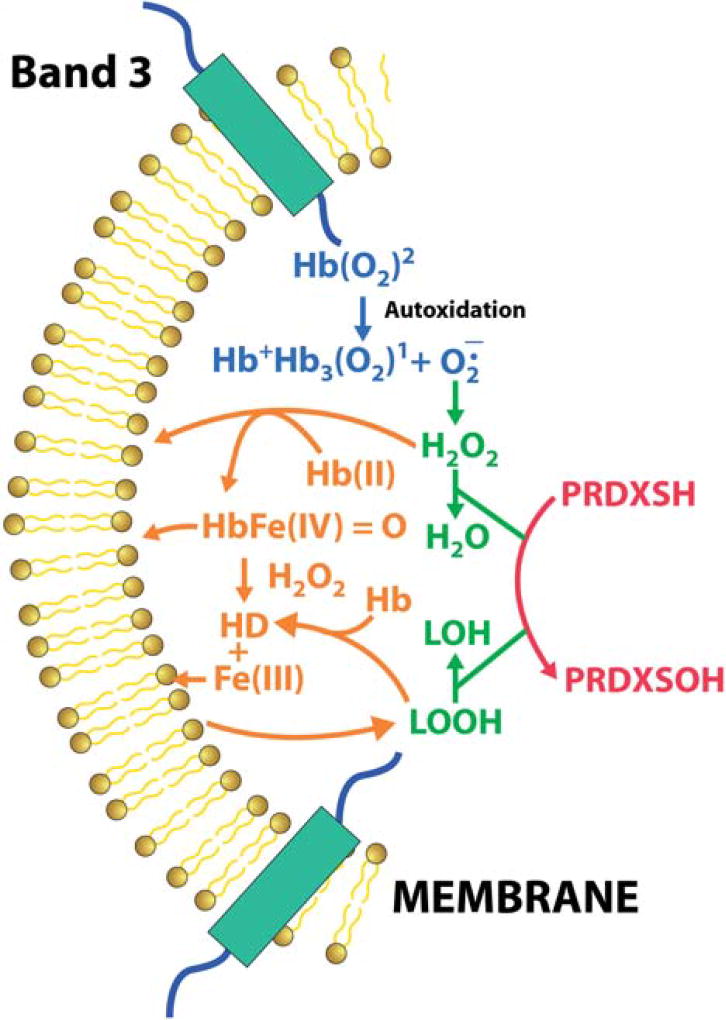Figure 6.
Schematic diagram of the role of PRDX2 in inhibiting heme degradation formation in RBCs. Superoxide generated by partially deoxygenated hemoglobin bound to membrane band-3 under hypoxic conditions converts to hydrogen peroxide. PRDX2, associated with the RBC membrane, scavenges this hydrogen peroxide preventing the formation of heme degradation products, and the associate release of iron. This inhibition of heme degradation also prevents oxidation of lipids that generate lipid hydroperoxides, which can further degrade the heme to generate fluorescent membrane products. The reaction of PRDX2 with lipid hydroperoxides further prevents any accumulation of lipid hydroperoxides and any associated membrane damage.

